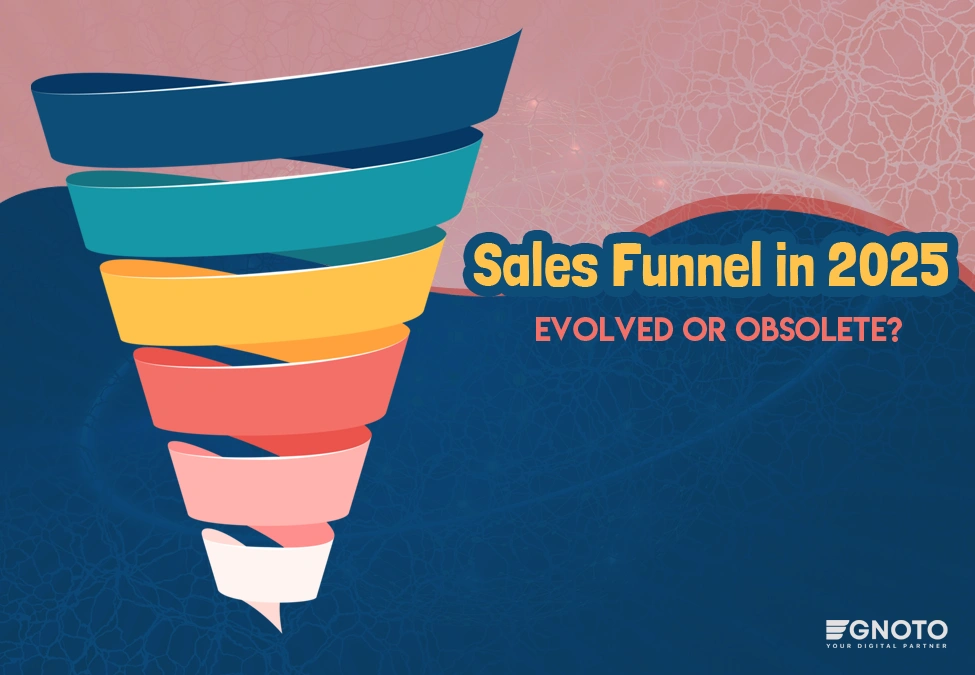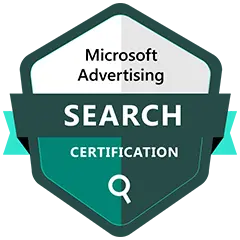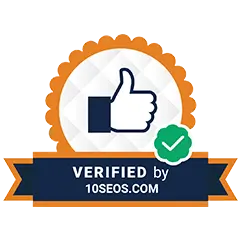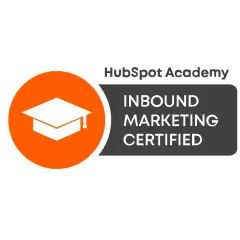Have you ever bought something online? Maybe a new coffee maker or a subscription to a streaming service recently? Did you notice how you made your decision? Did you see any ad or read the review, watch a video, etc., before you clicked on ‘BUY’?
Every business uses a tool called a Sales Funnel [Figure 1] to help customers make a decision. Sales Funnel is what every marketer looks up to for driving their business and digital marketing. It’s like a funnel used in the kitchen, wide at the top and narrow at the bottom. People enter from the top as they take an interest and start learning about the product.
But only a few make it to the bottom, i.e., but it. This linear method worked fine for a long time, but nowadays, something has changed! Some experts have started suggesting that this model has become old and outdated. So, what’s new? Let’s find out!
What Is The Traditional Sales Funnel Method?
Imagine you are walking down the street and see a new e-store that catches your attention. You may get curious to know what they are selling. This is called awareness, i.e., the first stage of the funnel.

The first stage is where businesses ensure they are being noticed. Now, let’s say you want to go inside and explore the products. This is called discovery or interest. Next, you start asking about a specific product’s specifications and hardware features. This is called evaluation. Next up, you make the choice between various models to find out which one is best for you. This is intent. And finally, you purchase the smartphone. This is called action.
The last and final layer is loyalty for businesses that are expecting frequent returning customers, such as a toothpaste brand, a skincare company, or a restaurant.
For a long time, this Sales Funnel has been used by many businesses to understand how customers move from discovering them to buying their product or services. But, there has been an update. Let’s find out what it is.
Why Some Think Sales Funnel Is Old News Now?
The way people buy things has changed a lot in the past few years. Previously, businesses needed to follow a simple path – introduce their products, catch people’s attention, and convince them to buy. But in 2025, this is no longer the case. Most shoppers have moved online. As of Q3 2023, the US retail e-commerce sales hit $284 billion [source: Forbes].
1. More Information Available: People can research products on their own instead of relying on what the company has said, read reviews, watch related videos, and compare options before making their decision.
Point: Customers jump around and learn from various sources before buying.
2. Omni-Channel Engagement: Nowadays, people trust recommendations and real experiences more than ads. Here, social media plays a huge role as buyers interact across various platforms like Instagram, YouTube, TikTok, and influencer recommendations before buying a product. So, businesses, too, need to interact with their target audience on all these platforms.
3. Non-Linear Buyer Journey: Buyers don’t follow a straight path anymore, they jump back and forth between researching, comparing, and deciding on what they want. As we can see, instead of following a straight funnel, the buying process looks more like a loop with multiple touchpoints.
4. Focus On Customer’s Experience: Now, it has become more important than ever to keep customers happy rather than just making a sale. This is because if a company treats a customer well, they will come back and even tell about their products or services to friends and family members.
Note: Many businesses offer customer service, loyalty programs, and personalized experiences for the same reason.
5. Retention Over Acquisition: Did you know that retaining a customer is 5 to 7 times cheaper than acquiring a new one? [source: Forbes] So, it makes sense for businesses to care more about keeping customers than chasing new ones.
This is because the probability of selling to an existing customer is 60 to 70%, while selling to a new customer is 5 to 20% only, and increasing customer retention by 5% can boost profits by 25-95%.
The Rise Of Alternative Models Instead Of The Sales Funnel
The Sales Funnel has been around for a long time, but in 2025, instead of thinking about sales as a one-way path, businesses are using new models to focus on building relationships rather than just making a one-time sale. Let’s see some popular models:
What Is The Flywheel Model?
Have you seen a spinning wheel? Once it starts moving, it keeps on going faster with the right push. That is how businesses work when they focus on keeping customers happy. The Flywheel [Figure 2] keeps turning and bringing new customers via referrals, positive experiences, and word-of-mouth.
How Does The Flywheel Model Work?
Here, instead of pushing customers down a funnel, the Flywheel keeps them engaged for a long time. This has three stages:
- Attract – It’s about bringing people in with helpful content, such as social media posts, blogs, and videos. Here, businesses connect with customers rather than just advertising.
- Engage – It’s about building relationships by answering questions, offering deals, or creating fun experiences. Here, a business focuses on keeping a customer interested in its products.
- Delight – It is about making customers happy so they recommend the brand to others. A happy customer is likely to bring new buyers, which will help businesses to grow without chasing new leads every time.
Examples: A customer journey, via the Flywheel Model, may look something like the following:
- A small coffee company sells specialty blends online.
- They share helpful content, like coffee brewing tips, fun facts, information about different beans, behind-the-scenes videos, etc.
- Viewers follow them on social media, read their blog, and sign up for emails.
- Some viewers turn into customers, try their coffee, and get a discount coupon for their next purchase.
- Because customer has a great experience, they share it with their friends and post positive reviews on social media.
- This brings new customers into the cycle, further fueling the Flywheel and keeping it spinning.
What Is The Buyer Orbit Model?
Here, customers move in a circle around the brand, in and out, based on their interest, recommendations, and engagement [Figure 3].

How Does The Buyer Orbit Model Work?
Customers move freely in and out of the process based on interest and engagement. Buyers can enter and exit at any point, coming back when they are ready. It helps businesses to focus on staying visible and engaging, rather than pushing people towards a sale.
Examples: A customer journey, via Buyer Orbit Model, may look something like the following:
- A customer sees a new product on Instagram.
- They check Google reviews to learn more about it.
- They watch a TikTok influencer talking about it.
- They decide to buy it after thinking about it, a week.
In the old Sales Funnel, people move in one direction, but here, they can interact at any point, learn, engage, and buy whenever they are ready.
Other Models Besides The Sales Funnel That Businesses Use
- Community Building – A brand may create a group, forums, and social pages where customers can come, interact, share, and feel connected. Some examples include LEGO Ideas, Sephora’s Beauty Insider Community, etc.
- Personalized Experience – A brand may tailor ads, recommendations, and products to match what each customer wants, making them feel valued and saving their time. A good example of this is Amazon’s e-commerce services.
Is The Sales Funnel Completely Dead In 2025?
No, it is not entirely outdated! Pheww…
The basic idea about how to help customers move from learning about a product to buying one is still useful. But, you can adapt it to make the most out of it by following:
- More Focus On Content – People don’t just buy something shown in an ad. They look for useful information first. So, creating helpful blogs, videos, and social media posts, and answering FAQs early on, can help.
- Integrating With Social Media – Nowadays, a customer can discover products everywhere from Instagram and YouTube to TikTok and even WhatsApp. The old funnel doesn’t have any focus on social media, but in 2025, it will be a major part of how people decide what to buy.
- Personalization Is The Key – “One size fits all” in digital marketing does not work anymore. Therefore, a brand must tailor their approach to individual customers by personal emails, recommendations, chatbots, and messaging that matches their needs.
- Make Buying Easy – Ensure the buying process is smooth on all devices, from phones and computers to different online platforms. We recommend keeping your off-page SEO up-to-date before creating digital marketing plans for social media and driving them to your website.
- Post Purchase Also Matters – Before, a business only needed to make a sale, but now, they have to keep customers happy after they buy with great service, rewards, and follow-up interactions, so that the buyers keep coming back.
Comparison Between Old Sales Funnel And New Models
Think of the old Sales Funnel as a basic map that lets people find a destination. That’s it!
Now, think of new models (Flywheel, Buyer Orbit, etc.) like a detailed GPS. It tracks real-time traffic (i.e., the social media trends), shows them nearby places (gives customers options to explore), creates a personalized route (using customer data), and keeps guiding after arrival (customer retention).
Say Goodbye To The Old Sales Funnel, Try The New Approach!
While the traditional Sales Funnel model has been in use for a long time, it is evolving due to the change in customer shopping behavior, the way they are engaging, and exploring. The new model, the flywheel model, represents a more accurate buyer’s journey from start to end. So, what should a company do, leave the old model completely and switch to the new one, or stick to what’s known?
It’s time for business to rethink their approach and focus on customer experience while keeping up with modern shopping habits. What would you like to do? Share your thoughts with us.










